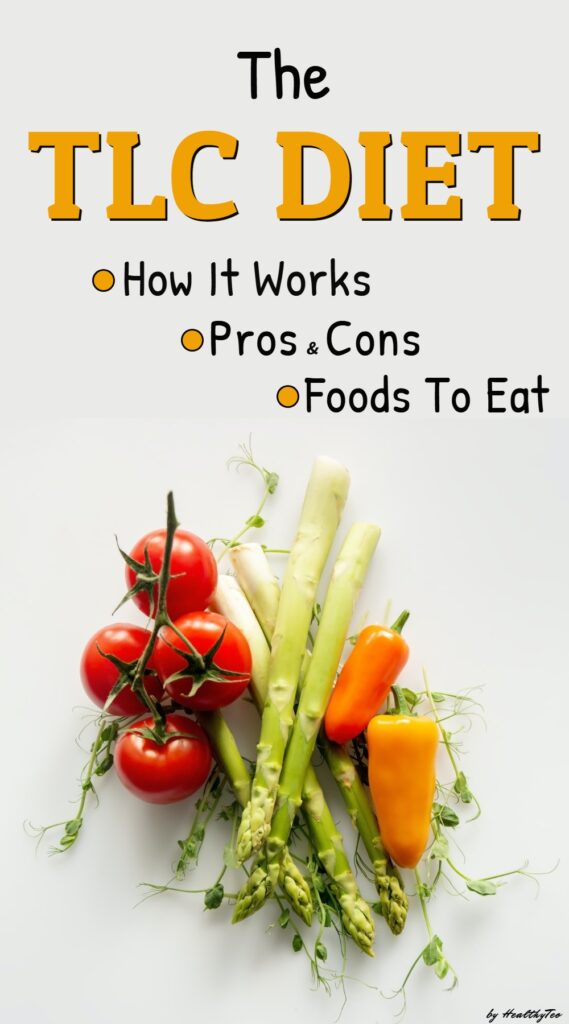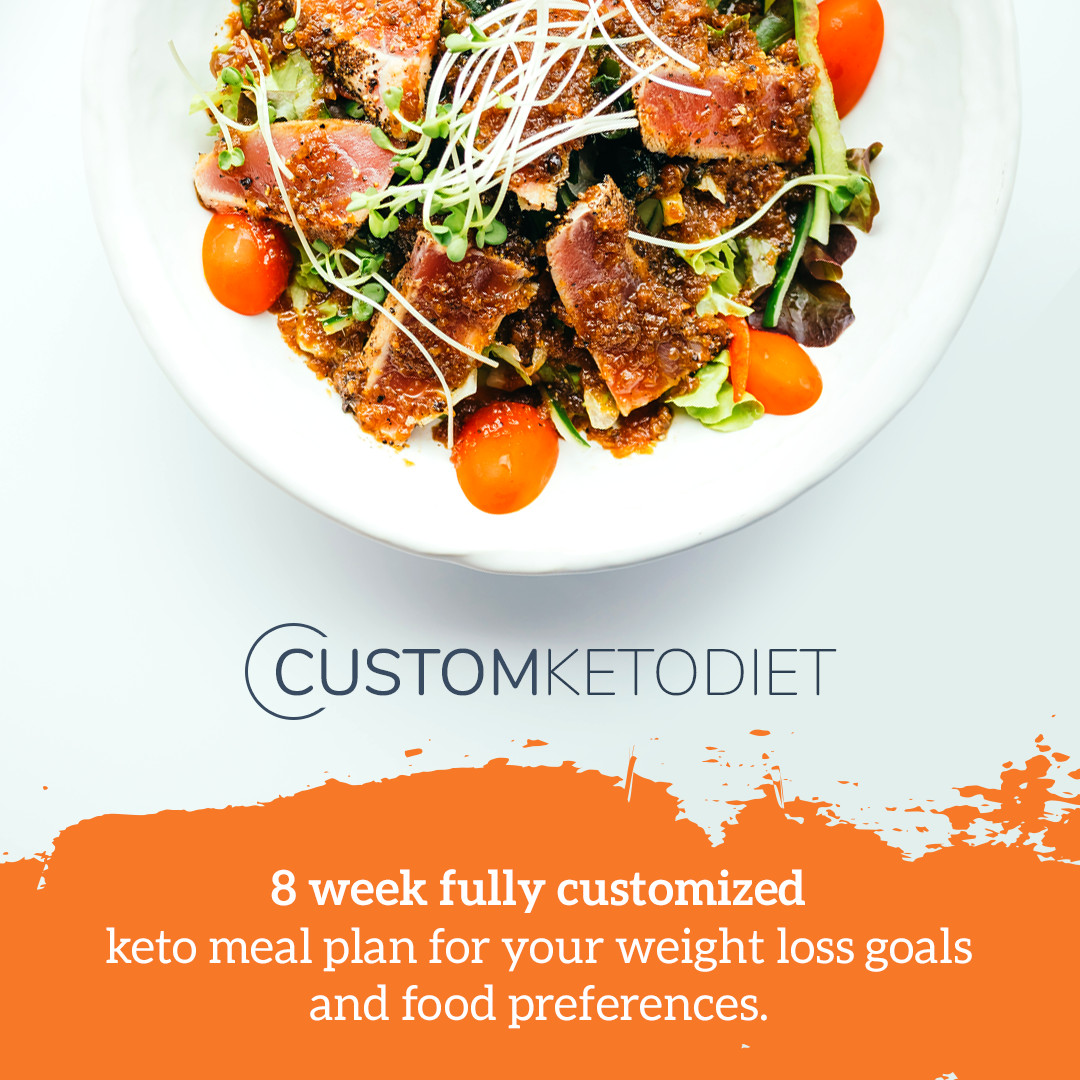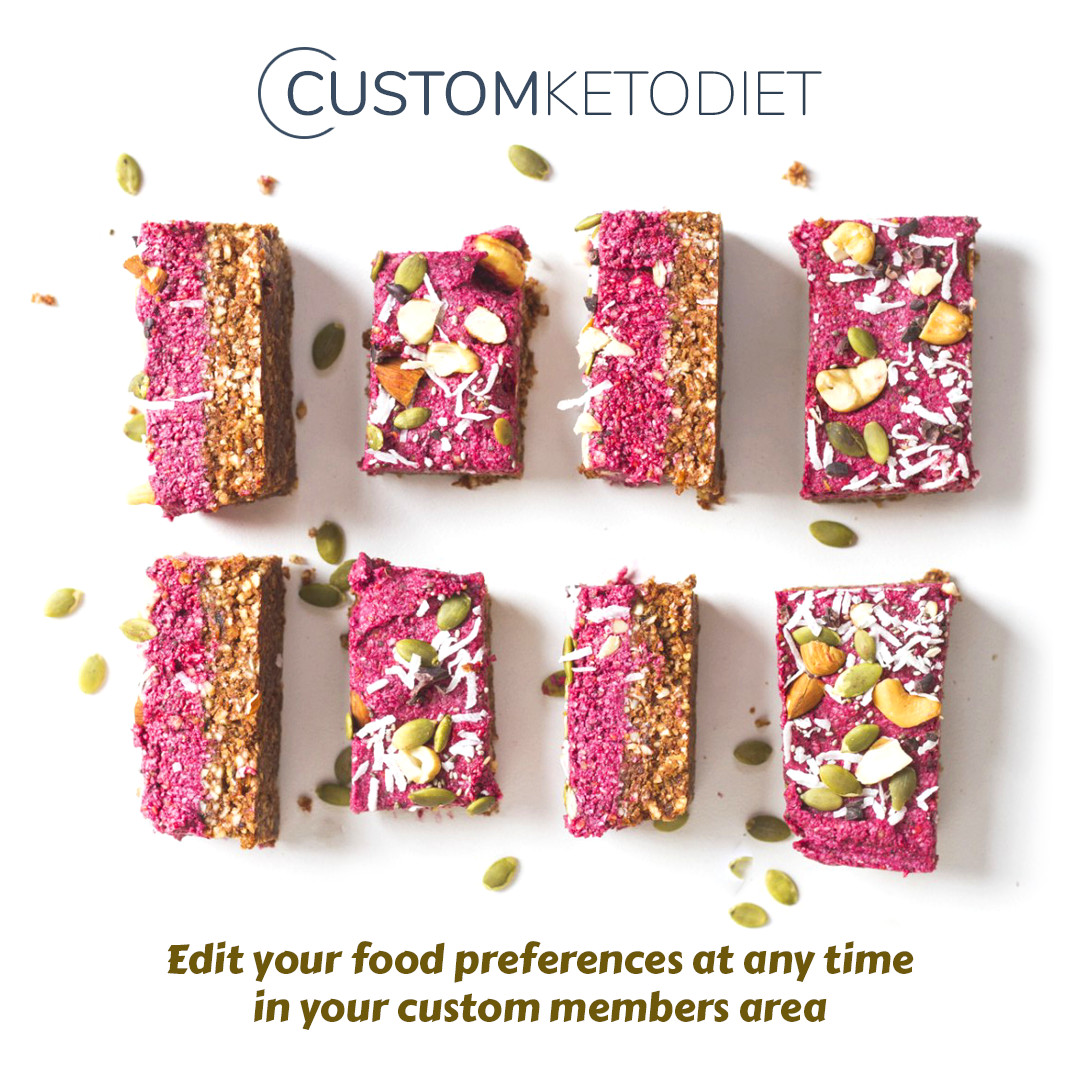The TLC diet is more of a lifestyle change than a diet. Physical activity, healthy eating habits, and other research-based approaches are all part of it.
We’ve looked through some studies to show you how the TLC diet works, as well as what foods to eat and avoid. You may also learn what the pros and potential downsides of following this eating plan are.
Let’s start with the basics and define the TLC diet.
This post may contain affiliate links, which means we may receive a small commission, at no cost to you, if you make a purchase through a link. For more information, please see our disclosure.
What is the TLC Diet?
The TLC diet, or Therapeutic Lifestyle Changes diet, is a healthy eating plan that aims to help people lower their cholesterol by consuming heart-healthy foods and making lifestyle changes.
It was created by the National Institutes of Health (NIH) and works by combining diet, exercise, and weight control to help prevent heart disease.
This is not a diet fad; it is evidence-based and intended to be followed in the long term; it should be viewed as more of a lifestyle change than a diet.
How does the TLC diet work?
The TLC diet is focused on consuming the number of calories required to maintain your ideal body weight. Determine your recommended daily calorie intake with the help of your doctor or a nutritionist. This is determined by your age, metabolism, degree of physical activity, and other things.
If heart health is the only goal, the TLC guidebook suggests 2,500 calories per day for males and 1,800 for women.
The TLC diet requires modifying the types of fat you consume and boosting your intake of health-promoting components such as soluble fiber and plant sterols, which can help lower cholesterol levels. It also combines dietary changes with increased physical activity to help with weight loss and heart muscle strengthening.
The TLC diet’s primary guidelines are as follows:
- Consume only enough calories to reach or maintain a healthy weight.
- Fat should account for 25-30% of your total daily calories.
- Less than 7% of your daily calories should come from saturated fat; this includes eating less high-fat dairy, such as butter and cheese, and avoiding fatty meats.
- Limit your total daily cholesterol consumption to less than 200 mg.
- Per day, aim for 10-25 grams of soluble fiber. Every day, consume at least 2 grams of plant sterols.
- At least 30 minutes of moderate-intensity physical activity every day, such as brisk walking, on most, if not all, days of the week.
- Limit your sodium intake to 2400 mg a day – about 1 teaspoon of salt.
Following the TLC diet entails increasing your intake of veggies, fruits, legumes, whole grains, seeds, and nuts. High-fat and high-cholesterol foods, such as fatty cuts of meat, dairy products, and processed foods, should be avoided.
What can you eat on the TLC Diet?
The program’s fundamental focus is on consuming foods low in saturated fat and cholesterol.

On the TLC diet, you can eat the following foods:
- Vegetables
TLC diet recommends high-fiber vegetables. They are naturally low in fat and calories. It is best to have 3-5 servings of vegetables every day.
Examples: Celery, cucumber, cauliflower, broccoli, spinach, kale, etc.
- Fruits
Fresh fruits, rather than fruit juice, are recommended by the TLC standards. Canned and dried fruits with no added sugar are permitted. Aim for 2 to 4 servings per day.
Examples: Apples, oranges, bananas, peaches, pears, etc.
- Legumes
Legumes are a good source of soluble fiber and should be consumed on a regular basis.
Examples: Beans, lentils, chickpea, peas, etc.
- Whole grains
On the TLC diet, whole grains are highly recommended. They are less processed than refined grains and thus more nutritious.
Examples: Brown rice, oats, quinoa, etc., and whole wheat foods (think pasta and bread).
- Nuts and seeds
This diet encourages people to eat healthy fats like nuts and seeds. Consuming them in moderation is essential.
Examples: Almonds, cashews, macadamia nuts, chestnuts, chia seeds, hemp seeds, flax seeds, etc.
- Some vegetable oils
The TLC diet allows the use of unsaturated vegetable oils such as olive oil, canola oil.
- Lean cuts of skinless meat
TLC diet allows poultry, red meat, and fish as long as they are lean, skinless, and low in saturated fat. The daily limit for meat consumption is 5 ounces.
Examples: Red meat – lean cuts of pork, lamb, beef, etc. Poultry – skinless chicken turkey, etc. Fish: salmon, codfish, etc.
- Low or non-fat dairy products
Nonfat or low-fat dairy products containing no more than 3 grams of fat per ounce can be consumed two to three times per day.
Examples: Low-fat or fat-free (skim) yogurt
Foods to avoid
On the TLC diet, avoid foods high in fat and cholesterol. On this diet, avoid the following foods:
- Processed meat
Processed meat contains a variety of chemical components that are not found in raw meat. Many of these substances are harmful to one’s health. Processed meat is meat that has been preserved via curing, salting, smoking, drying, or canning.
Examples: bacon, sausage, hot dogs, etc.
- Fatty cuts of meat
Saturated fat-rich meats are forbidden on the TLC diet. You should also avoid meat with skin, such as poultry containing skin. Always trim extra fat from meat cuts.
Examples: Red meat – fatty cuts of beef, lamb, pork, etc. Poultry with skin – turkey, chicken, etc.
- Full-fat dairy products
Examples: Milk, yogurt, cheese, butter, cream, etc.
- Egg yolks
- Fried and processed foods
Avoid foods fried in hydrogenated oils to limit your trans fat consumption. You should also avoid other processed foods that include a lot of salt and sugar.
Examples: Fried foods – french fries, doughnuts, egg rolls, etc. Processed foods – baked goods, cookies, potato chips, crackers, etc.
One-day sample meal plan
Now that you know what you can eat on the TLC diet, here is a one-day sample menu (1,800 calorie menu) to give you an idea of what a day on the TLC diet would look like.
Breakfast
- 1 cup oatmeal ( with 1/4 cup raisins and 1 cup fat-free milk)
- 1 cup calcium-fortified orange juice
- 1 cup honeydew melon
- 1 cup coffee (with 2 tbsp. fat-free milk)
Lunch
- Roast beef sandwich
- 1/2 cup pasta salad with 1/4 cup mixed vegetables
- Apple
- 1 cup unsweetened icedtea
Dinner
- Fish
- 1 cup rice
- 1/2 cup broccoli
- 1 cup strawberries topped with 1/2 cup low fat frozen yogurt
Snack
- 1 cup canned peaches
- 2 cups popcorn cooked with canola oil
The TLC diet often consists of three meals and one snack. Breakfast, lunch, and dinner are the three meal times. Meal skipping is not permitted.
The TLC Diet: Pros
It can lower cholesterol and promotes heart health
The style of eating suggested by the TLC diet is beneficial for both lowering cholesterol and lowering the health risks linked with it.
In a 32-day study of 36 adults with high cholesterol, the TLC diet was able to reduce levels of “bad” LDL cholesterol by an average of 11%.
Another comparative study published in The Journal of Nutrition discovered that following the TLC diet for six weeks resulted in significant decreases in total cholesterol and triglyceride levels, particularly in men.
This could be due to the high fiber content of the diet. Soluble fiber, according to the Mayo Clinic, can lower cholesterol absorption in the bloodstream. A daily intake of five to ten grams of soluble fiber or more reduces LDL cholesterol.
Plant sterols and stanols are also recommended by the TLC diet. These are naturally occurring compounds found in foods such as vegetables, fruits, whole grains, nuts, seeds, and legumes that have been proven to reduce total and “bad” cholesterol levels in the blood.
Foods enriched with sterols or stanols are also available (margarine, orange juice).
Physical activity is also an important part of the diet. Incorporating exercise into your daily routine and limiting your intake of saturated fat will help keep your LDL cholesterol levels in check.
Incorporates nutrient dense whole foods
One of the TLC diet’s strengths is its nutritional completeness. It meets the federal government’s requirements for total and saturated fat, carbohydrates, and protein, plus it’s high in fiber and calcium.
The diet promotes nutrient-dense whole foods such as fruits, vegetables, grains, legumes, nuts, and seeds, which are typically lower in calories and saturated fat.
It may help you lose weight
According to the National Institutes of Health, the TLC diet is not intended to aid in weight loss, but it may help. Regular exercise, calorie restriction, and increasing soluble fiber consumption can all be beneficial approaches for promoting long-term weight loss.
Stabilizing blood sugar
The TLC diet includes increasing your intake of soluble fiber, which can decrease the absorption of sugar in the blood and help you manage your blood sugar levels.
According to 2014 research published in the European Journal of Clinical Nutrition, a small trial of 31 persons with the condition indicated that following the TLC diet and replacing red meat with legumes decreased cholesterol levels and improved blood sugar control.
Sustainable for long-term health
The diet does not restrict any of the major food groups and allows for a great deal of flexibility in food selection, all of which make it a long-term viable plan to follow.
The TLC diet was created as a long-term answer to the common risk of heart disease. While followers may see effects in a matter of months, if they stick with it over the long term, they can significantly improve their cholesterol levels and heart disease markers.
The TLC Diet: Potential Downsides
The research might be outdated
Though there is evidence that certain components of this eating plan benefit your health in a variety of ways, there hasn’t been any recent research on the TLC diet specifically. Many of the studies on the TLC diet date from the early 2000s.
Some people are concerned that the TLC diet manual’s recommendations, such as limiting dietary cholesterol to 200 mg per day, are unnecessary.
Although it was originally considered that dietary cholesterol played a role in heart health, most research now reveals that it has little to no effect on blood cholesterol levels in most people.
According to a 2019 analysis published in Circulation, healthy dietary habits can reduce the risk of heart disease more efficiently than a precise dietary cholesterol target.
As a result, more research is required to better validate the diet’s claimed health effects.
It can be difficult to track nutrients
The TLC diet includes strict calorie and macronutrient limitations for its followers. It can be tough to keep track of whether you are complying with the diet’s daily nutrient allotments.
You must learn to read nutrition labels and calculate the percentage of saturated fat in the foods you eat.
TLC diet support
Here are a few examples of how the TLC diet can help you if you choose to start it:
“Your Guide to Lowering Your Cholesterol With TLC,” a beginner’s PDF manual from the National Heart, Lung, and Blood Institute, offers a diet overview, recipes, and advice.
There are also various cookbooks available to help you get started, such as “The Complete Idiot’s Guide to the TLC Diet.“
The takeaway
The TLC diet is a lifestyle program that is primarily intended to contribute to reducing cholesterol levels and good heart health.
Although this is not a new diet, many individuals choose it each year.
The diet prioritizes vegetables, fruits, whole grains, legumes, nuts, and seeds while reducing high-fat and high-cholesterol foods.
Following the program’s lifestyle guidelines over time may help you improve or maintain your wellbeing.
Remember that each person is unique, and not every diet is suitable for everyone. Before making any dietary changes, always consult your doctor or a licensed nutritionist. They will advise you on what is ideal for you based on your nutritional needs, goals, genetic blueprint, etc.

Disclaimer: All the information on this website is for educational purposes only. Nothing on this website should be considered as health or medical advice. Always consult with a doctor or trusted health professional before following any dietary, nutritional, or herbal recommendations.




